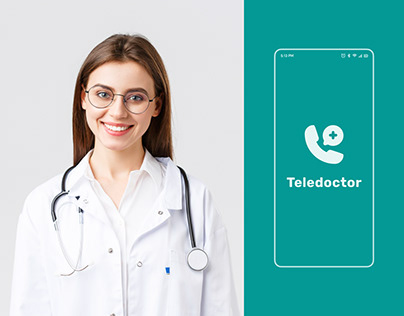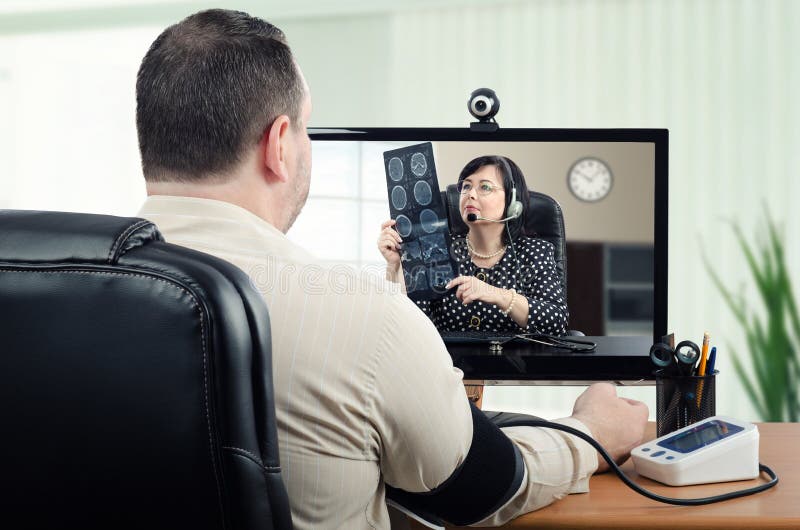Teledoctors vs Traditional Healthcare: Which is Better?
Teledoctors vs Traditional Healthcare: Which is Better?
Blog Article
Discovering the Benefits and Challenges of Teledoctors in Modern Healthcare
As the health care landscape develops, teledoctors have arised as a critical component in connecting voids in medical gain access to and efficiency. How can the health care sector balance these advantages with the integral challenges?
Expanding Access to Care
Telemedicine has become a pivotal innovation in modern-day medical care, considerably increasing accessibility to look after diverse populaces. By leveraging electronic technology, teledoctors have transformed the typical medical care delivery design, making it feasible for individuals in underserved or remote areas to get prompt clinical assessment. This advancement is especially helpful for people staying in country areas, where the deficiency of healthcare centers and professionals typically leads to postponed or poor therapy.
Teledoctors contribute in linking the space produced by geographical barriers. Through digital appointments, patients can access a wide variety of health care solutions without the need for substantial travel. This is specifically valuable for those with wheelchair concerns or chronic problems needing regular clinical attention. Moreover, telemedicine enhances continuity of treatment by enabling regular follow-ups and surveillance, therefore enhancing person results.
The assimilation of teledoctors right into health care systems additionally sustains the management of public health and wellness situations by facilitating rapid feedback and triage. Throughout pandemics, as an example, virtual appointments lower the burden on physical medical care centers, decreasing direct exposure threats for both people and medical care service providers. As telemedicine continues to progress, it guarantees to improve the landscape of healthcare access, making it more reliable and inclusive.
Cost-Effectiveness of Teledoctors
The cost-effectiveness of teledoctors is a substantial aspect driving their extensive fostering in health care systems. By lowering the need for physical facilities and in-person visits, teledoctors offer a more inexpensive option to typical medical care distribution.
Moreover, teledoctors facilitate a much more effective usage of healthcare resources by minimizing unneeded emergency clinic brows through and medical facility admissions. People can access timely appointments for small conditions or follow-up treatment, which helps to relieve the problem on overstretched medical care centers. This efficiency not only results in cost savings for healthcare suppliers yet additionally decreases the monetary stress on patients that may or else deal with costly healthcare facility expenses.
Additionally, teledoctors can aid in managing chronic conditions better by giving regular surveillance and timely interventions. This aggressive method can avoid issues, thus lowering long-lasting therapy expenses. Generally, teledoctors provide a practical remedy to the intensifying expenses of medical care, while preserving top quality treatment delivery.
Enhancing Individual Benefit
While cost-effectiveness plays an essential role in the rise of teledoctors, enhancing client convenience stands as another compelling advantage of this health care design. With the integration of teledoctors, clients can bypass the generally taxing procedure of scheduling and going to in-person visits.
Additionally, teledoctors use flexible scheduling, enabling individuals to prepare appointments at times that ideal match their individual and professional dedications. This flexibility is very useful for individuals balancing requiring job timetables or family members duties, making certain that health care can be incorporated perfectly into their lives. In addition, the capability to access clinical specialists from the convenience of one's home can cause boosted individual involvement and adherence to therapy plans, as the barriers to looking for treatment are minimized.
The comfort given by teledoctors not just enhances the person experience but likewise adds to an extra effective and receptive healthcare distribution system, inevitably sustaining far better wellness results.
Attending To Personal Privacy Issues
In the middle of the expanding adoption of teledoctors, privacy worries become a significant factor to consider. As healthcare increasingly depends on digital platforms, making you could look here certain the confidentiality of patient info becomes critical. The digitization of medical documents and making use of telecommunication modern technologies demand durable protection actions to safeguard delicate data from unauthorized accessibility and breaches.
Health care companies must adhere to rigid policies, such as the Health And Wellness Insurance Policy Transportability and Accountability Act (HIPAA) in the USA, which develops nationwide requirements for protecting clinical information. Compliance with such regulations is crucial in maintaining person count on and ensuring their information is handled properly. File encryption of data, safe communication networks, and normal audits are a few of the actions that can be implemented to boost information security.
Cybersecurity dangers are advancing, and medical care organizations must continue to be alert to brand-new vulnerabilities. In addition, educating both people and medical care suppliers concerning best techniques in information personal privacy is necessary.
As teledoctors end up being more indispensable to healthcare distribution, attending to personal privacy concerns is important to ensure both the efficiency and reliability of these services.

Navigating the Digital Divide
Linking the electronic divide is an essential difficulty in the prevalent adoption of teledoctors. teledoctors. This divide incorporates variations in accessibility to digital modern technology, especially amongst rural, low-income, and senior populaces. These groups typically do not have the required gadgets, dependable web connection, or digital proficiency required for effective engagement in telehealth services. Subsequently, the benefits of teledoctors-- such as enhanced access and convenience-- continue to be unreachable for lots of individuals that might most benefit from them.
Initiatives to mitigate this divide demand a multi-faceted approach. Policymakers must prioritize framework advancement to enhance web gain access to in underserved locations. Additionally, efforts to support technology for low-income households can play a critical duty in guaranteeing fair access. Doctor and neighborhood companies need to team up to provide digital literacy programs, empowering patients to navigate telehealth platforms confidently. Moreover, developing user-friendly interfaces can this article further improve ease of access for all demographics, particularly the elderly.

Conclusion
The assimilation of teledoctors right into contemporary medical care provides considerable advantages, including boosted accessibility to care, cost-effectiveness, and boosted patient comfort. However, difficulties such as personal privacy problems, the digital divide, and cybersecurity hazards need to be addressed to make the most of these advantages. By implementing durable data protection measures, enhancing digital literacy, and ensuring protected technological infrastructure, the potential of teledoctors can be totally realized, advertising fair medical care distribution and changing the healthcare experience for all individuals.

Report this page